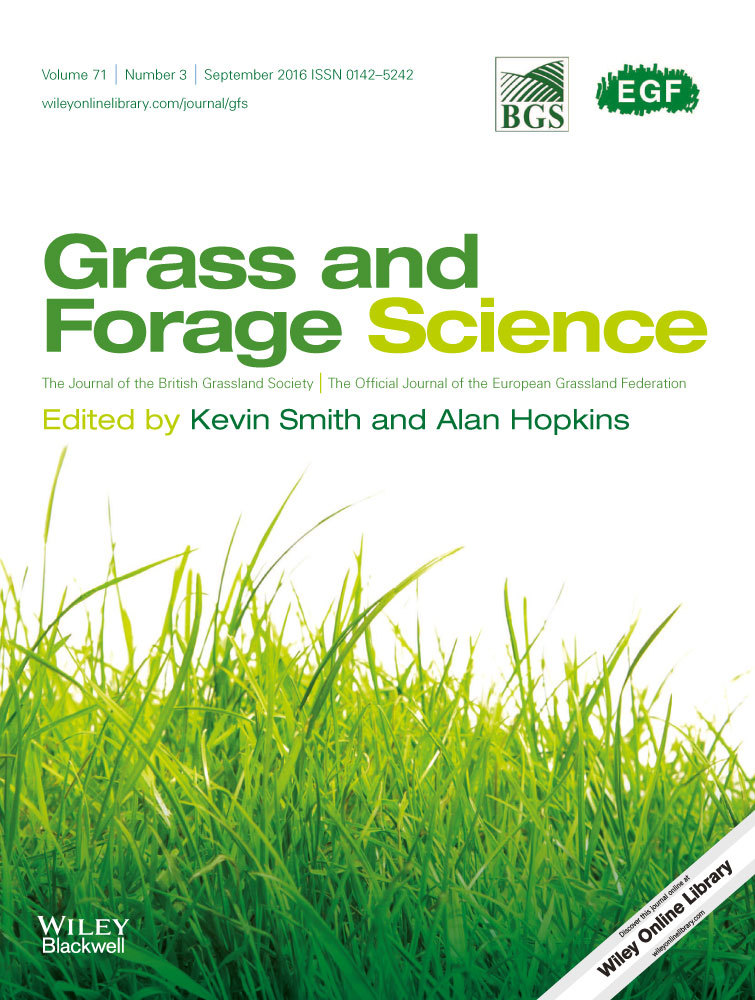Ver ítem
- xmlui.general.dspace_homeCentros Regionales y EEAsCentro Regional MisionesEEA Cerro AzulArtículos científicosxmlui.ArtifactBrowser.ItemViewer.trail
- Inicio
- Centros Regionales y EEAs
- Centro Regional Misiones
- EEA Cerro Azul
- Artículos científicos
- Ver ítem
Defoliation patterns and their implications for the management of vegetative tropical pastures to control intake and diet quality by cattle
Resumen
This study assessed the use of pasture attributes to control daily intake and diet quality during progressive defoliation on pastures of Axonopus catarinensis. Three consecutive 12‐day grazing treatments of progressive defoliation were conducted with Brahman cross‐steers. Daily forage intake and defoliation dynamics were assessed using a pasture‐based method. The treatments differed in initial sward height (33, 44 and 61 cm) and herbage mass (1030, 1740
[ver mas...]
This study assessed the use of pasture attributes to control daily intake and diet quality during progressive defoliation on pastures of Axonopus catarinensis. Three consecutive 12‐day grazing treatments of progressive defoliation were conducted with Brahman cross‐steers. Daily forage intake and defoliation dynamics were assessed using a pasture‐based method. The treatments differed in initial sward height (33, 44 and 61 cm) and herbage mass (1030, 1740 and 2240 kg ha−1). The post‐grazing residual sward height, at which forage intake decreased, appeared to increase with the initial sward height (12·3, 14·6 and 15·5 cm). Steers grazed up to four distinctive grazing strata in all treatments. The depth and herbage mass content of the top grazing stratum were at least five times higher than the lower grazing strata in all treatments. This explains why forage intake decreased when the top grazing stratum was removed in approximately 93% of the pasture area in all treatments, equivalent to approximately 7% of the pasture area remaining ungrazed. We conclude that the residual ungrazed area of the pasture, rather than residual sward height, can be used to develop grazing management strategies to control forage intake and diet quality in a wide range of pasture conditions.
[Cerrar]

Autor
Benvenutti, Marcelo A.;
Pavetti, Daniel Rolando;
Poppi, Dennis P.;
Gordon, Iain J.;
Cangiano, Carlos Alberto;
Fuente
Grass and forage science 71 (3) : 424-436. (September 2016)
Fecha
2016-09
Editorial
Wiley
ISSN
1365-2494
Formato
pdf
Tipo de documento
artículo
Palabras Claves
Derechos de acceso
Restringido
 Excepto donde se diga explicitamente, este item se publica bajo la siguiente descripción: Creative Commons Attribution-NonCommercial-ShareAlike 2.5 Unported (CC BY-NC-SA 2.5)
Excepto donde se diga explicitamente, este item se publica bajo la siguiente descripción: Creative Commons Attribution-NonCommercial-ShareAlike 2.5 Unported (CC BY-NC-SA 2.5)

